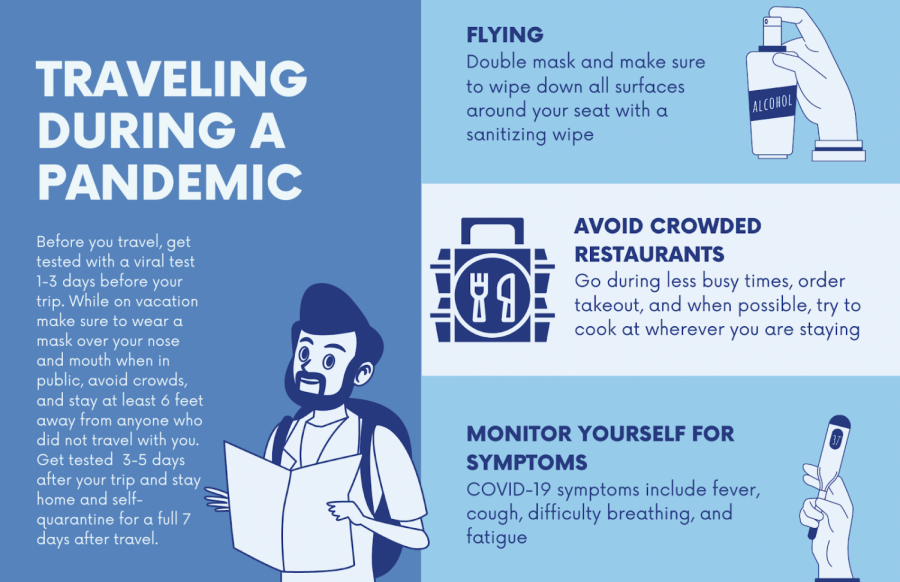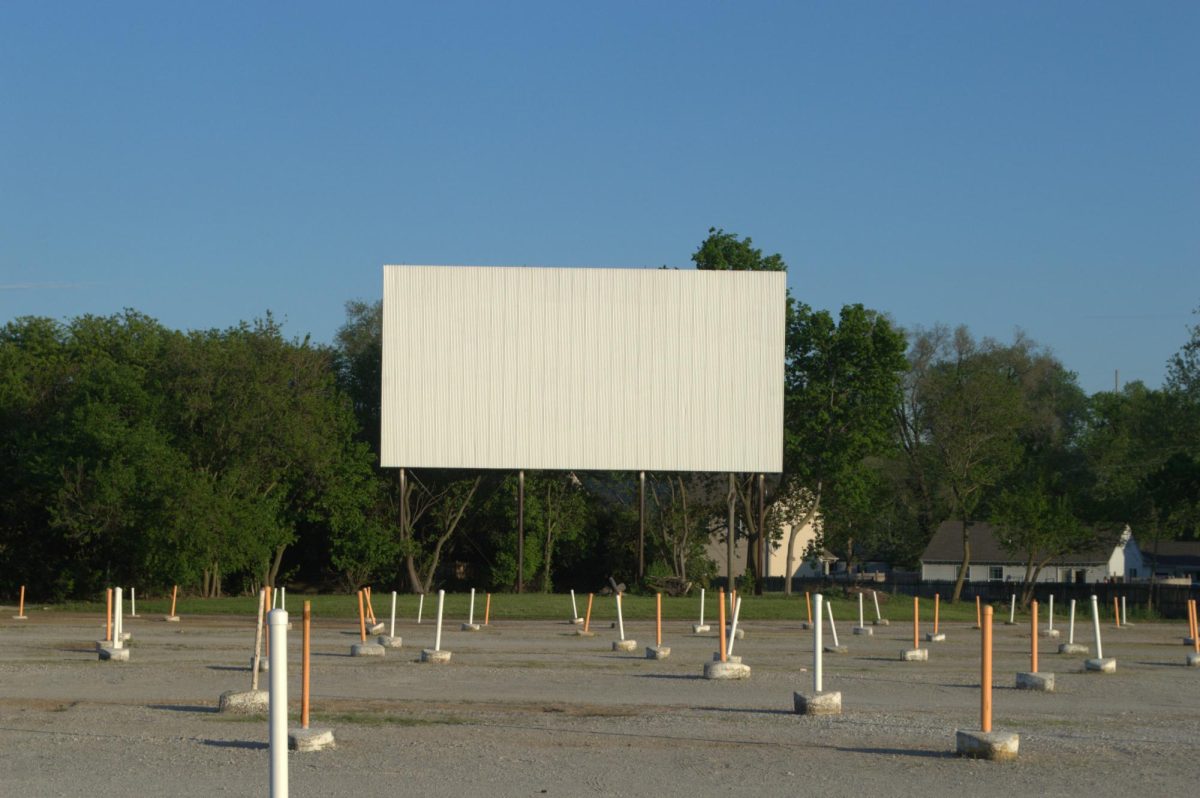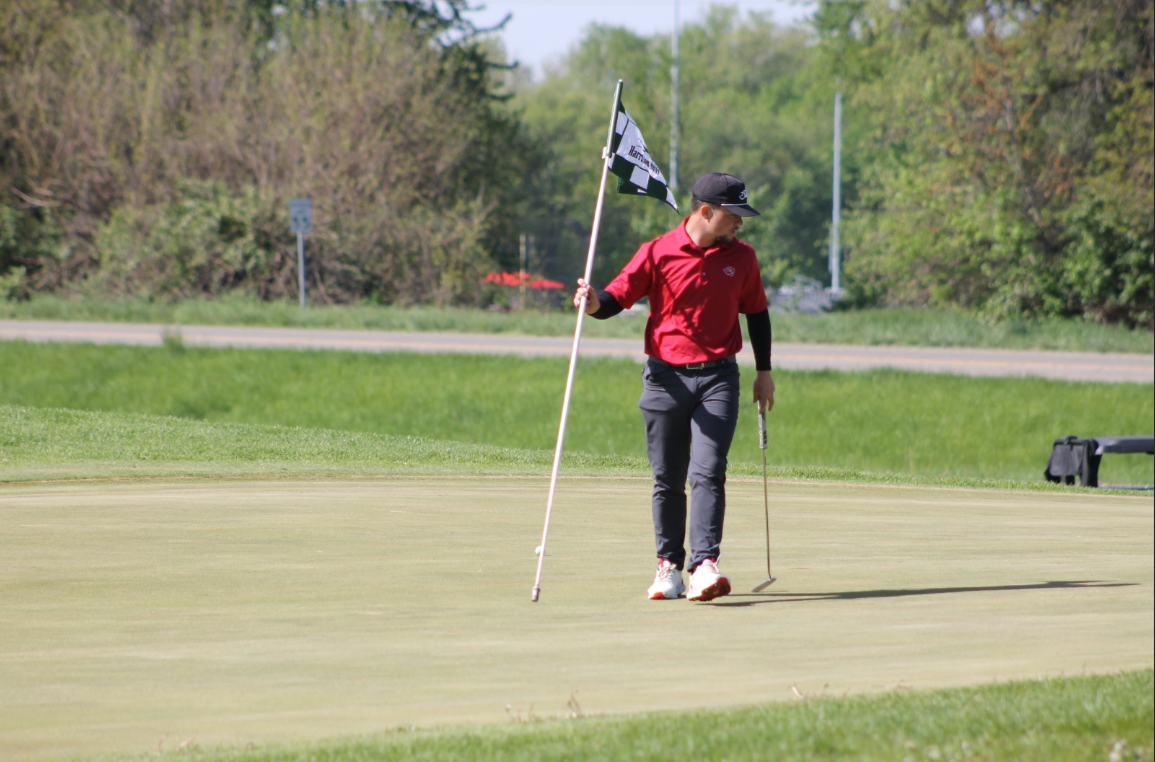Travel tips for staying safe during a pandemic
The CDC recommended travel guidelines for mitigating the spread of COVID-19.
April 1, 2021
For many students and parents alike, spring break is a much-needed vacation from the work and stress that comes with the end of the school year approaching. This year, spring break is a large cause of controversy due to irresponsible travelers that have turned popular vacation destinations into COVID-19 hotspots. When traveling over break, take a look at the CDC guidelines in order to protect yourself and local residents of wherever you are visiting.
Chances of contracting COVID-19 while traveling are heavily dependent on your method of transportation and safety precautions. Car travel is the safest mode of transport because the only time there is potential to come into contact with others could occur is while stopping for gas, bathroom breaks or food. It is important to wash hands after having contact with frequently touched surfaces such as a gas pump or the door to a bathroom. Taking public transportation increases travel risk, as it often requires sitting or standing within six feet of others. If you plan on taking public transportation, make sure to learn what you can do to protect yourself. Direct flights are less risky than flights with layovers, but remember that when you are in the airport, lots of time is spent in security lines and terminals that bring you into close contact with many people. Fortunately, most viruses do not spread easily on flights because of air filtering systems and circulation on airplanes. However, keeping your distance can be difficult if you are taking crowded flights, as sitting within six feet, or two meters, of others, sometimes for hours, may make you more likely to get COVID-19. Most airlines provide customers with a sanitary wipe as soon as they board the plane, so as soon as you locate your seat, make sure to wipe down all immediate surfaces. A CDC report found that double-masking can block more than 90 percent of viral particles, so when traveling on planes it is advised to double-mask or wear a mask with a filter in it.
In order to decrease potential exposure risks while on vacation, try to avoid large gathering areas and maintain a distance of at least six feet between yourself and people you did not travel with. If you arrive at the beach in the morning and it is already busy, go find a less popular and less crowded beach. When it comes to meals, the safest possible option is to buy groceries at a local supermarket and cook meals at home. If you are staying in a hotel or other accommodations that do not allow you to cook, avoid dining inside crowded restaurants. Getting takeout or dining outside will be safer. In a recent study, scientists found that adults with positive COVID-19 test results were twice as likely to have reported dining at a restaurant than those with negative COVID-19 test results. When eating indoors, ventilation flow in restaurants and bars can cause droplets to spread at distances greater than 6 feet. Poor ventilation can also increase risk as it may cause the virus to accumulate in the air. Most restaurants will require diners to wear a mask at all times except when seated and eating, and even if it is not enforced, you should still wear a mask to protect others around you.
If you are traveling over break, be sure to adhere to both local and CDC COVID-19 restrictions. By wearing a mask, social distancing and following guidelines, you are not only keeping yourself protected but also respecting the local residents and making sure that their community stays a safe place to live and visit. After returning from break, the CDC advises to get tested for COVID-19 and quarantine until a negative test result is received. If you travel internationally, HSE schools encourage a full seven-day quarantine, even if a negative test result is received. If you choose not to get tested, then stay home and self-quarantine for 10 days after you return. Coming back to school without getting tested after traveling puts your classmates and teachers at risk. Make sure to stay safe and have a good break, Tigers!









